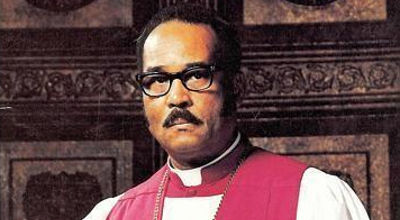AG and COGIC Break Down Racial Barriers
The two largest Pentecostal denominations in the United States—the Assemblies of God and the Church of God in Christ—have had little interaction throughout their histories, yet both emerged in part from the interracial Azusa Street revival in Los Angeles (1906-1909).
Despite this common origin, the two churches developed along largely separate trajectories. They have similar beliefs and have both witnessed strong growth since their inceptions, but their interaction has been limited until recent decades, separated apparently by race.
Assemblies of God members in the United States, until recently, had been overwhelmingly white, while the Church of God in Christ is mostly African-American.
This week, the widow of the late Church of God in Christ Bishop J. O. Patterson Sr. and the Assemblies of God joined hands in an effort to bridge the denominational and racial divides.
The Assemblies of God hosted the Bishop J.O. Patterson Sr. Symposium on Sept. 17-18 in Springfield, Mo. During the two-day event, the bishop’s life and ministry were heralded and his widow, “Mother” Mary Patterson, was honored for donating her husband’s personal papers to the Flower Pentecostal Heritage Center (FPHC), which is located in the Assemblies of God national offices.
Bishop J.O. Patterson Sr., who was the presiding bishop (similar to the AG general superintendent) for the Church of God in Christ (COGIC) from 1968-1989, was one of the most influential men in COGIC history. His papers are considered a treasure by the FPHC director Darrin Rodgers.
“The Bishop J.O. Patterson Sr. Collection is a valuable addition to the Flower Pentecostal Heritage Center and opens a door to the rich history of the Church of God in Christ for students, researchers and historians,” Rodgers explains. Rodgers says the donation is significant because materials documenting the Church of God in Christ have not been easily accessible to historians.
“The decision by Mother Patterson to donate Bishop Patterson’s papers is monumental,” Rodgers says. “I pray her decision leads other COGIC members to consider donating their materials so a more complete history of the Pentecostal movement can be documented, preserved and shared for future generations.”
The Bishop J.O. Patterson Sr. Symposium included a message by the Bishop Lemuel Thuston (a graduate of Central Bible College and the Assemblies of God Theological Seminary) of the COGIC Kansas East Jurisdiction, held at Central Bible College; a reception honoring Mother Patterson at the Assemblies of God Theological Seminary; and a historical account of Bishop J.O. Patterson Sr.’s ministry by COGIC historian Dr. David Daniels at the AG national offices chapel. Gospel music artist Sara Jordan Powell, who founded the COGIC Fine Arts Department in 1974 under the leadership of Bishop J.O. Patterson Sr., led worship at the events.
Mother Mary Patterson also addressed the audience at the national offices chapel. She shared that through her interactions with Rodgers and the touring of the AG facilities and archives, she was convinced this was the place for her husband’s papers.
“Once I saw [the Flower Pentecostal Heritage Center] I was sold on the idea that this is where I wanted Bishop Patterson’s papers to be deposited,” Patterson said. “If we don’t preserve our history, we don’t know where we’ve come from or where we’re going.”
Patterson added she was excited about the potential for future cooperation. “This is a global ministry that the Lord has called us to come together, and I believe this [donation] is one of the ways He has confirmed that we need to bridge the [divide].”
Rodgers says the Patterson Collection is an important part of the expanding African-American Pentecostal works now archived at the FPHC, and takes its place alongside other renowned collections such as the original Azusa Street newspapers and Smith Wigglesworth’s original sermon notes.














































